Wind Cave National
Park is a United States National Park 10 miles north of the
town of Hot Springs in western South Dakota. Established in 1903 by
President Theodore Roosevelt, it was the seventh U.S. National Park
and the first cave to be designated a national park anywhere
in the world. There was a fee for cave tours. There were several different
types of tours available.
The cave is notable for its displays of the calcite formation known as boxwork. Approximately 95 percent of the world's discovered boxwork formations are found in Wind Cave. Wind Cave is also known for its frostwork.
The cave is also considered a three-dimensional maze cave, recognized as the densest (most passage volume per cubic mile) cave system in the world. The cave is currently the sixth-longest in the world with 140.47 miles of explored cave passageways, with an average of four new miles of cave being discovered each year. Above ground, the park includes the largest remaining natural mixed-grass prairie in the United States. |
|
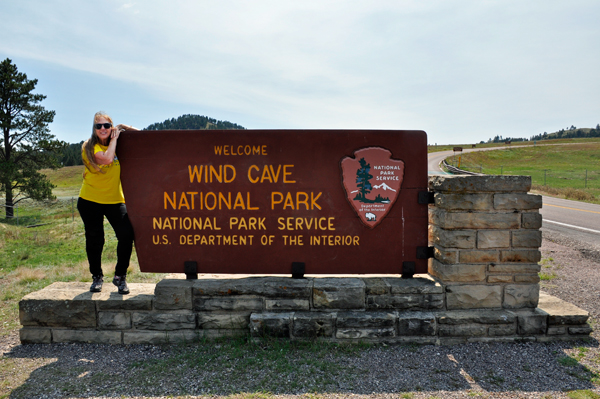
|
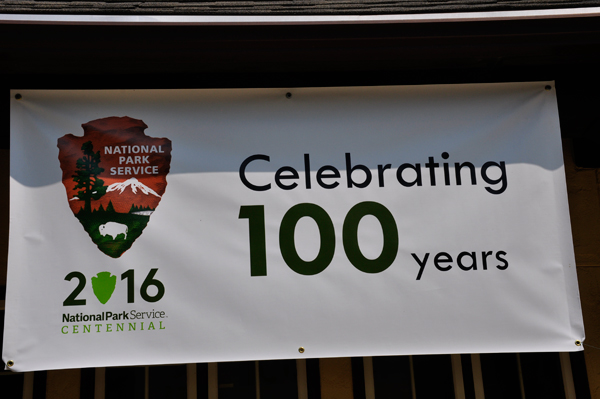
|
Below: The 75 minute cave tour started with a journey outside along a path. The total distance of the walk (including this path) was only about 1/2 mile, but there were approximately 300 stairs, all but eleven down. |
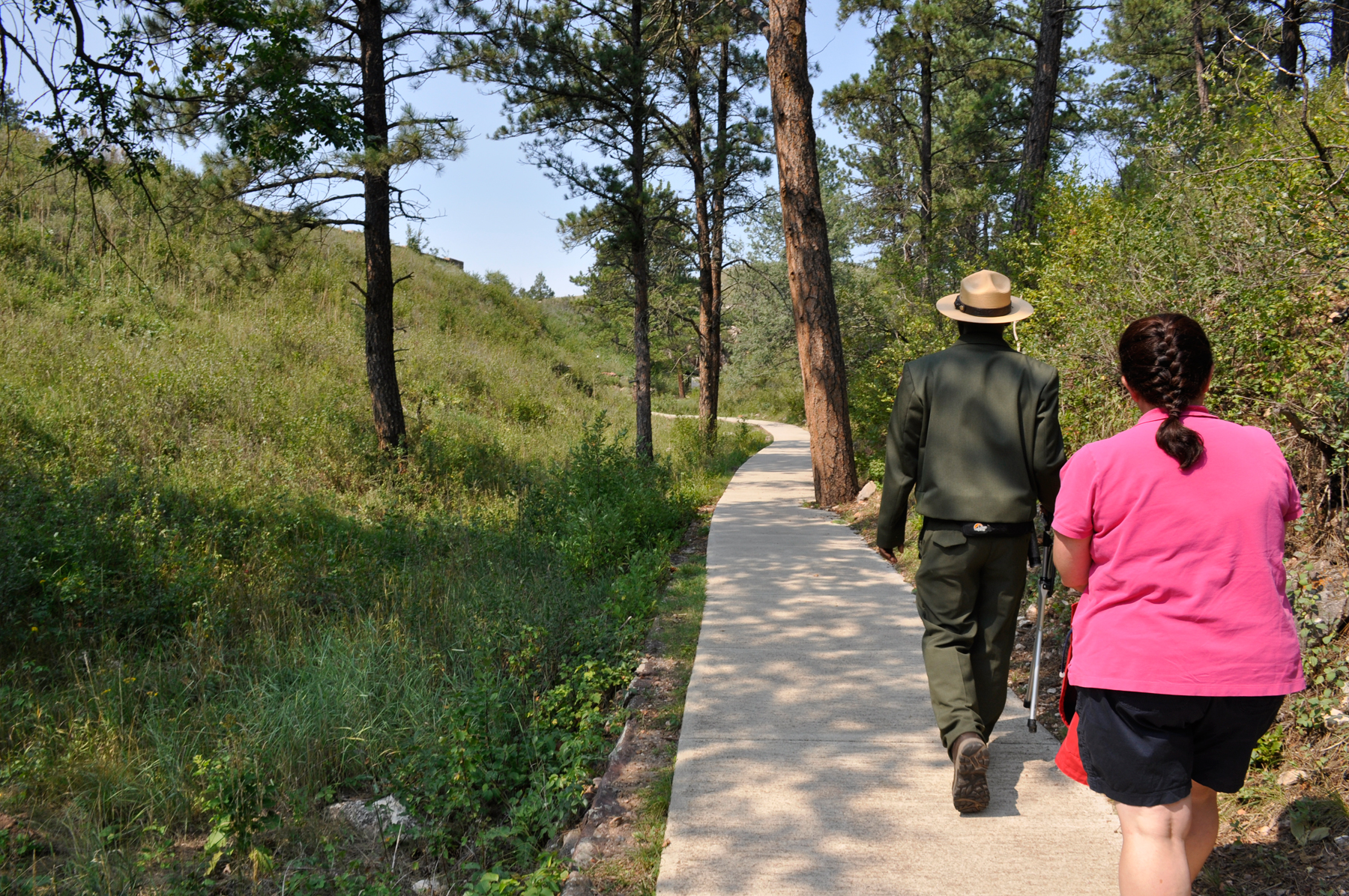
|
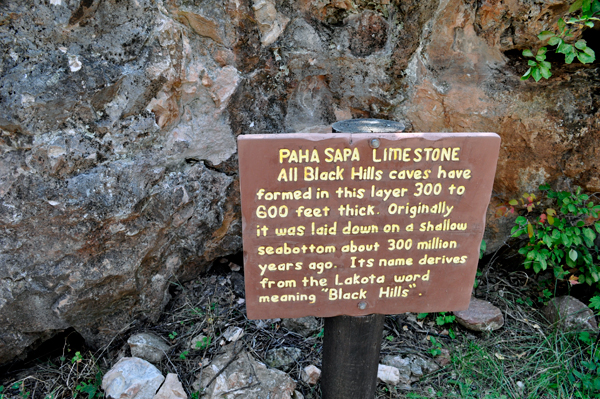
|
Below: Karen Duquette at The man made entrance for tours. |
Below: The natural cave entrance. |
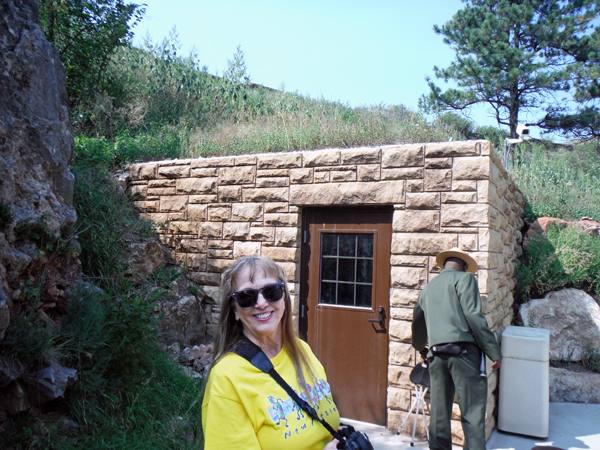
|
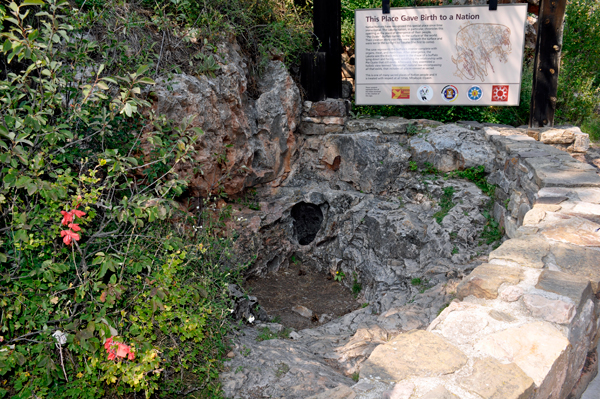
|
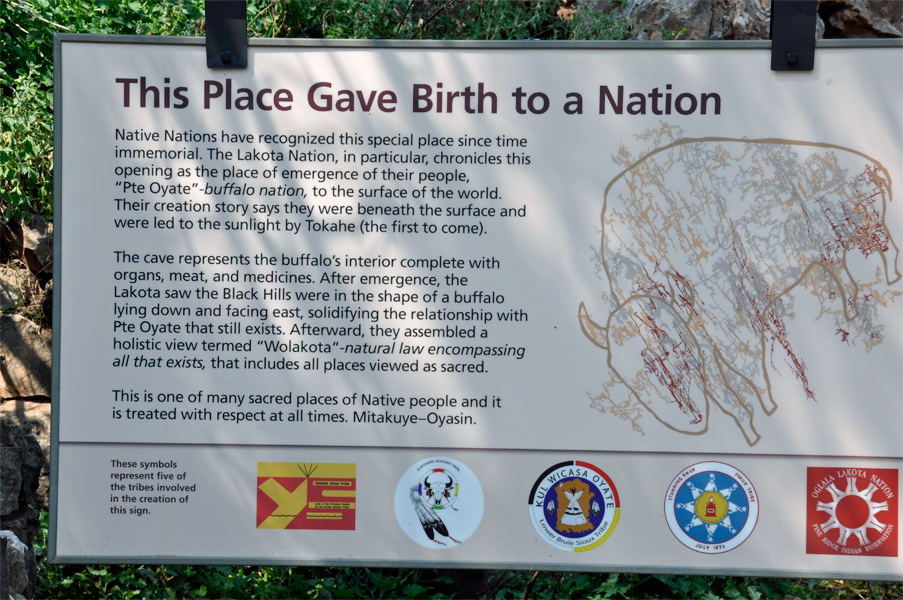
|
Below: The United States National Park Ranger at the natural entrance of Wind Cave. He demonstrated the cave blowing a piece of cloth back out of the cave.
Caves are said to "breathe," that is, air continually moves into or out of a cave, equalizing the atmospheric pressure of the cave and the outside air. When the air pressure is higher outside the cave than in it, air flows into the cave, raising cave's pressure to match the outside pressure. When the air pressure inside the cave is higher than outside it, air flows out of it, lowering the air pressure within the cave. A large cave such as Wind Cave with only a few small openings will breathe more obviously than a small cave with many large openings. This breathing is the wind for which Wind Cave was named. |
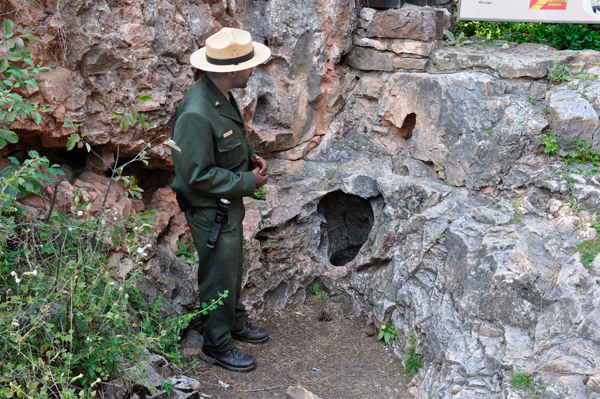
|
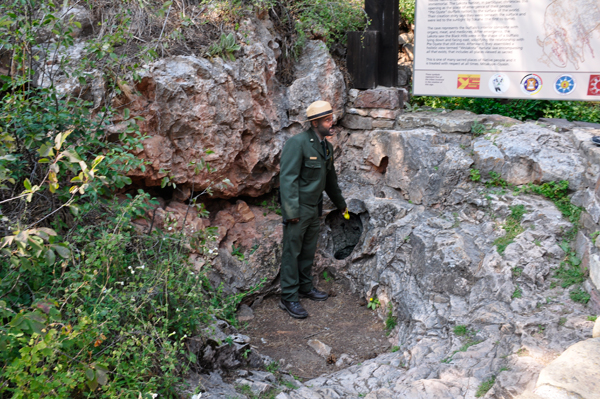
|
Below: One lone bat just
inside the entrance of Wind Cave. |
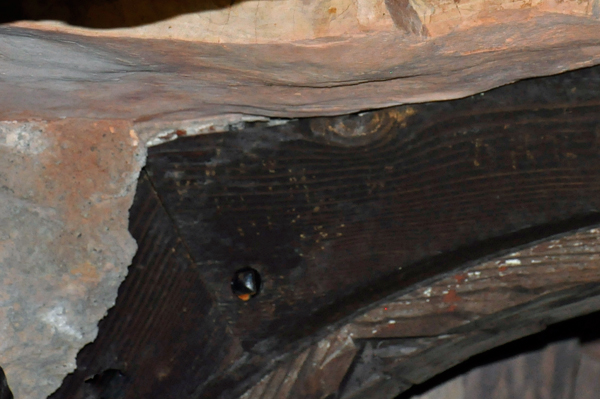
|
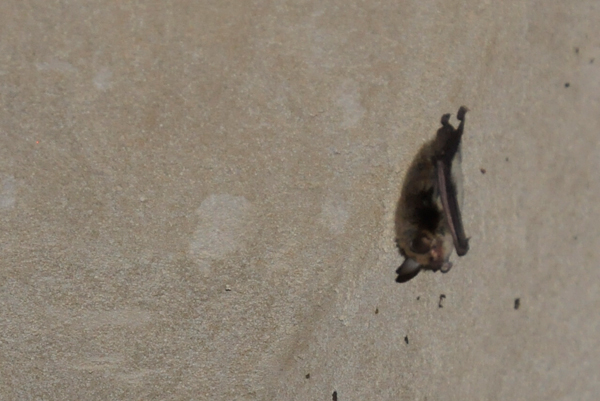
|
Below: There were about 80
steps down almost as soon as the two RV Gypsies entered the cave and
another 75 shortly thereafter. |
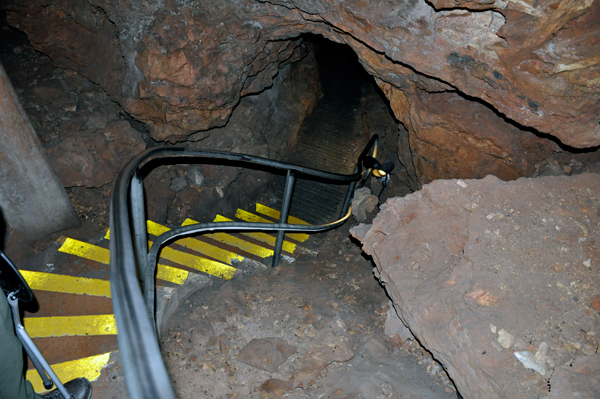
|
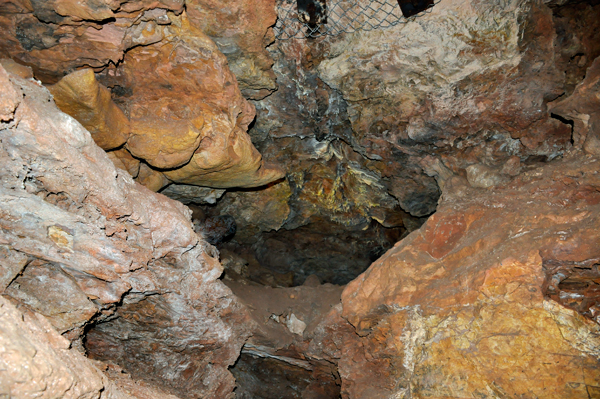
|
The passageways through which the two RV Gypsies and the rest of the group walked were long and narrow. The rock that surrounded them was limestone, originally formed in a warm shallow sea from the shells and hard parts of marine animals, like corals, snails, and brachiopods. Some geologists believe the passageways were formed by a dissolving action of acid-rich water on limestone rock, following a system of parallel fractures. The fractures may have formed with the uplifting of the surrounding mountains, the Black Hills. Some geologists believe the cave passageways were formed by the cracking and dissolving of extensive blocks of gypsum (calcium sulfate). Gypsum, a very soft and weak rock, crystallized in the same sea water at the same time the limestone accumulated. Gypsum is easily converted to limestone (calcium carbonate) by chemicals in groundwater, so only small amounts of that gypsum remains today. The origin of Wind Cave ultimately remains a mystery, since geologists, looking at the same evidence, do not always agree! |
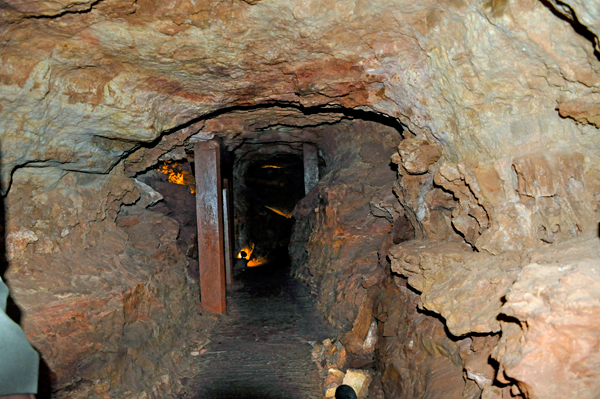
|
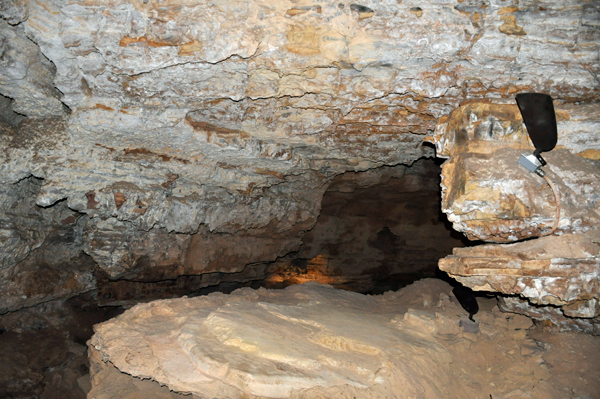
|
Below: The first of the most common sights in Wind Cave; Calcite boxwork on the ceiling at Wind Cave. Boxwork is extraordinarily rare elsewhere - over 95% of the known boxwork worldwide is found within Wind Cave. This boxwork is the result of differential dissolution of intensely fractured and veined limestone during cave formation. Boxwork is not a true speleothem (cave formation), but a speleogen, having formed before the cave itself. |
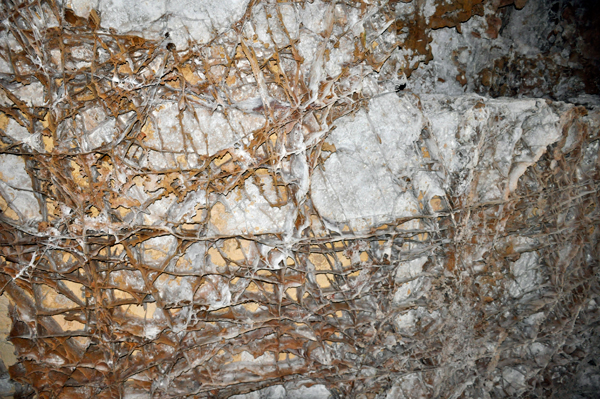
|
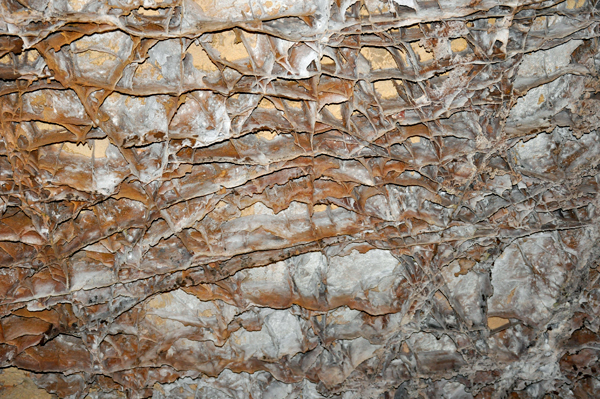
|
Below: Approximately 200 yards
from the entrance, the first large room on this tour was called the
Post Office, so named because of the boxwork shown above. By this point,
the two RV Gypsies had already descended about half of the 300 stairs
and were about 12 stories below the level of the entrance. This area
is actually under the hill, parallel to the trail shelter where the
tour began! |
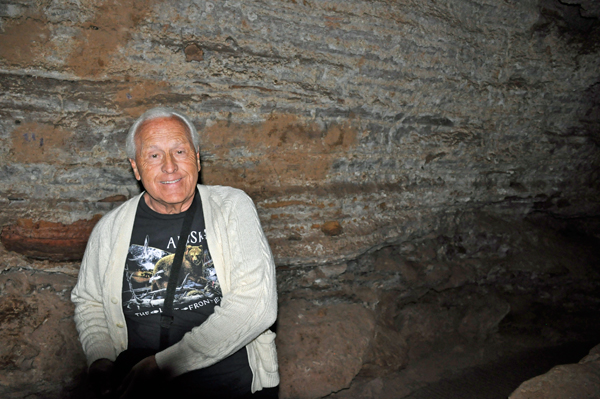 |
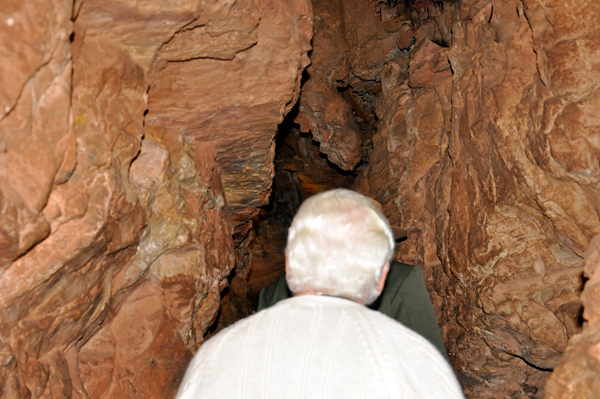 |
Below: The two RV Gypsies
walked almost 1,000 feet from the "Post Office" to
the next stop. The stairs were spread out now, and the trail had a slight
slope. There were some high ceilings, and low ones, too! Occasionally
drops of water fell on the two RV Gypsies, although the guide called
this a "dry cave". The seepage is controlled by rainfall
and snowmelt amounts. Generally, the cave is wet underneath stream beds
and low spots on the surface above, and dry beneath hills. |
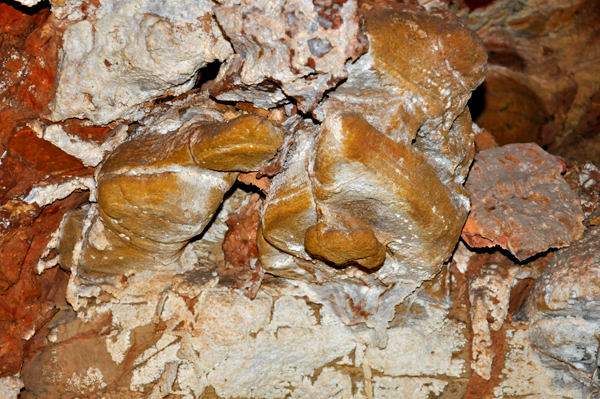
|
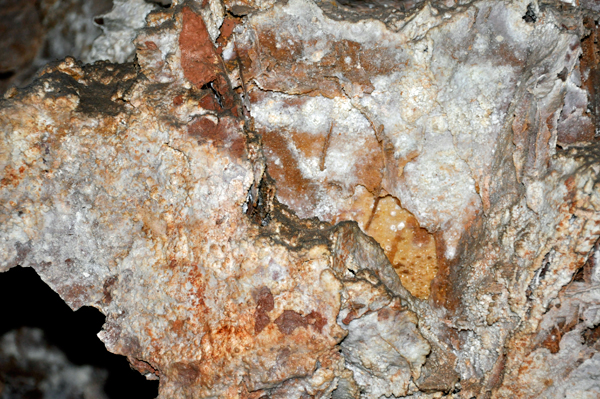
|
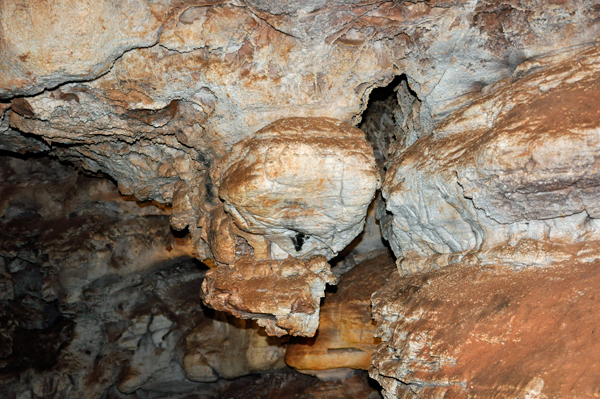
|
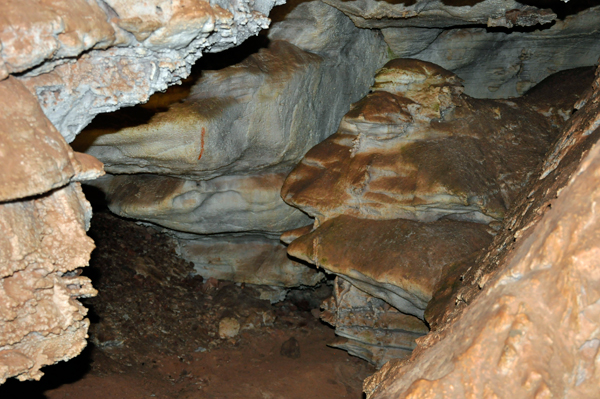
|
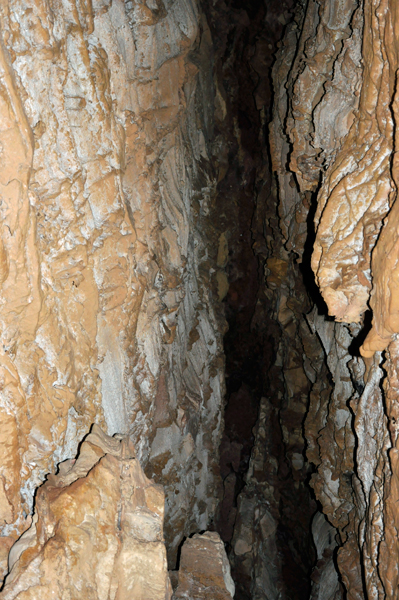
|
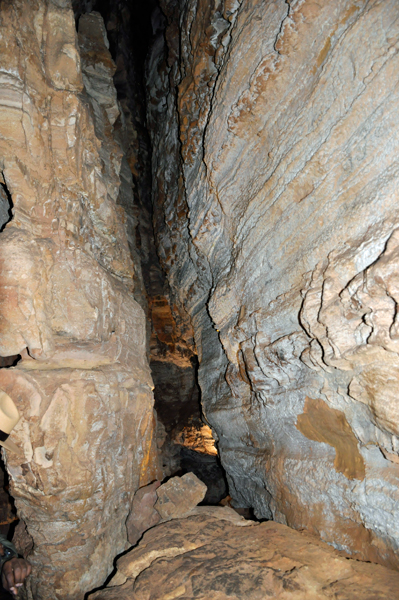
|
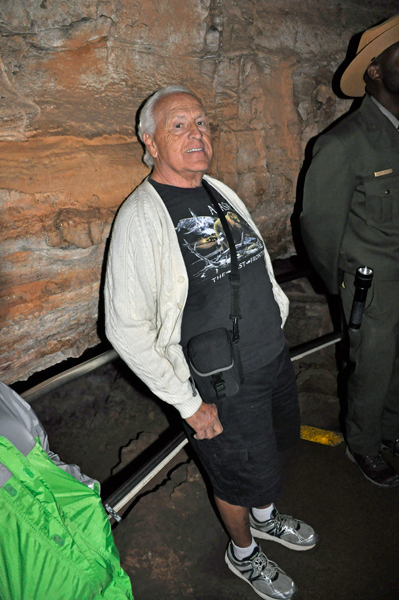
|
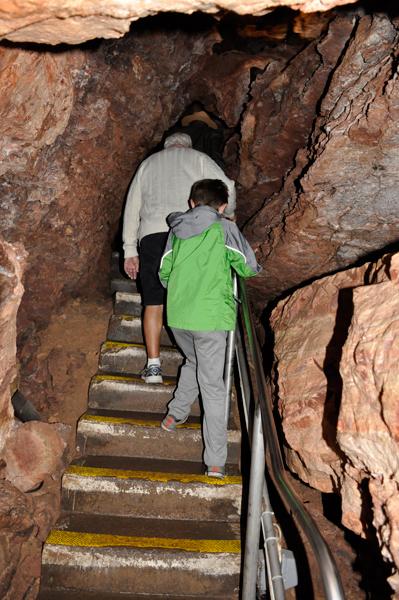
|
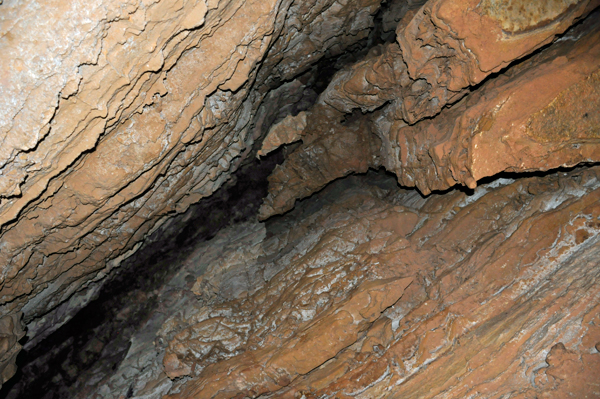
|
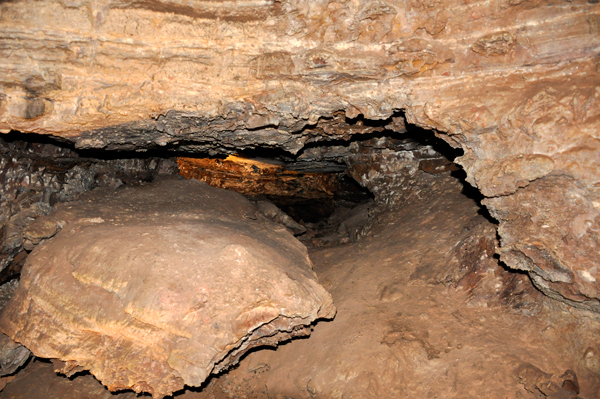
|
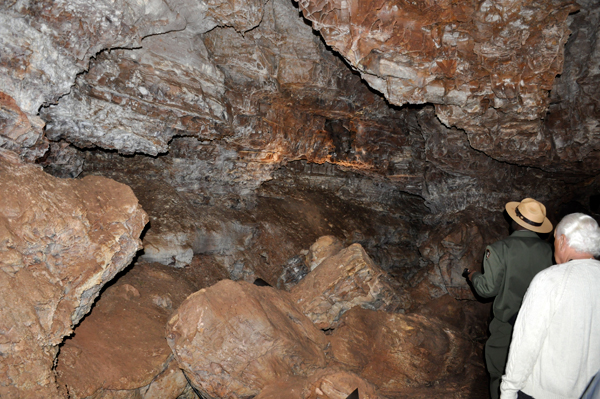
|
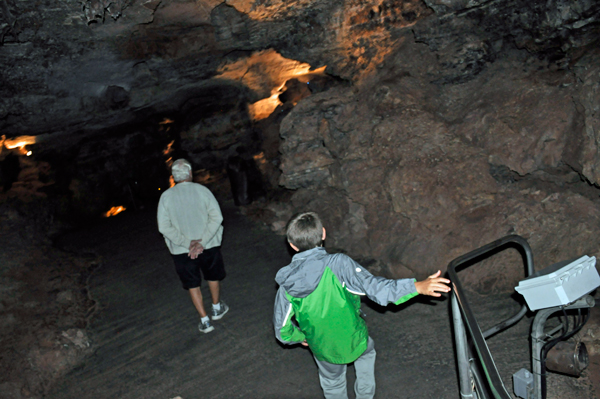
|
Below: The two RV Gypsies
in the Wind Cave |
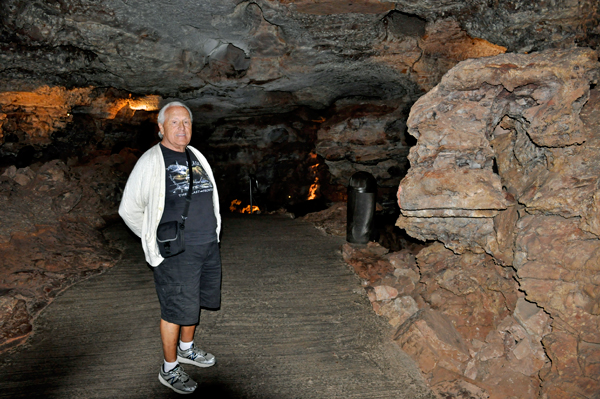
|
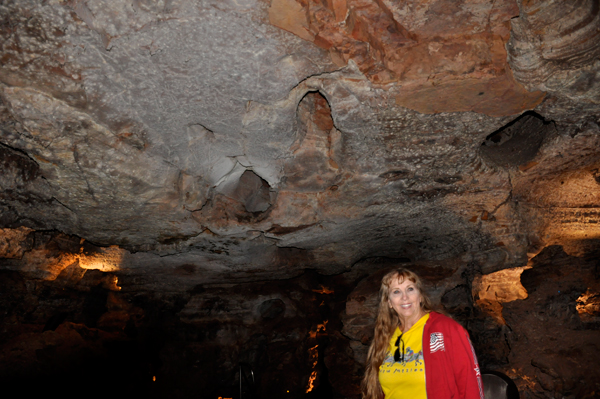
|
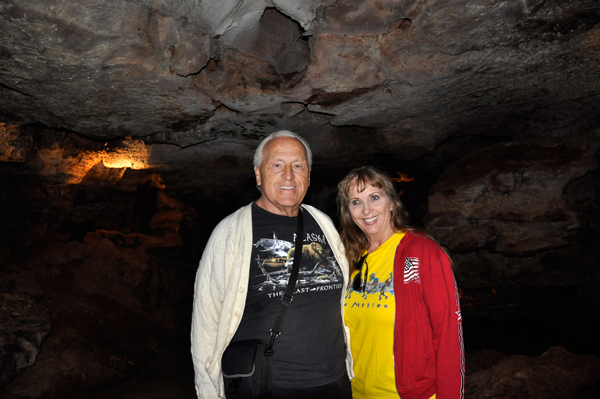
|
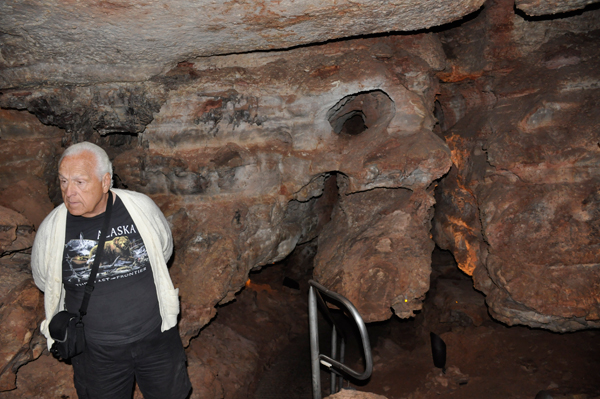
|
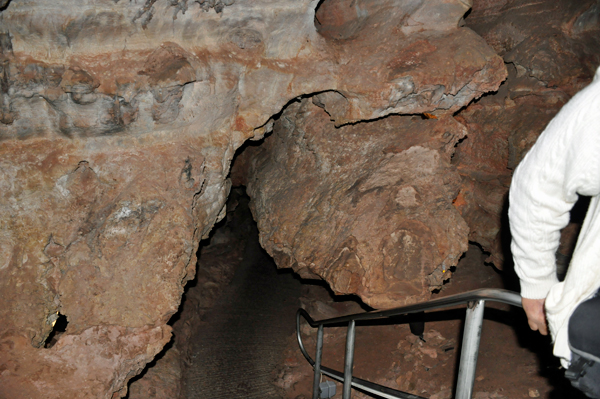
|
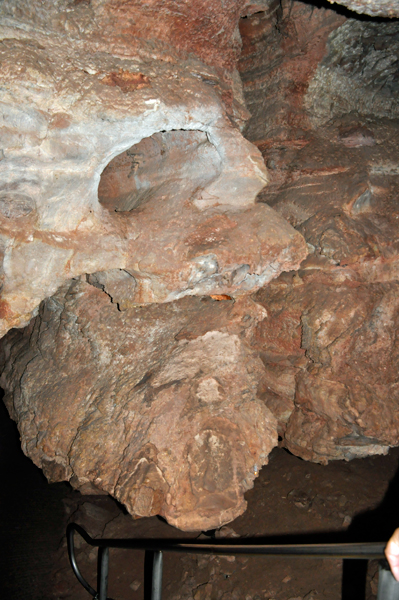
|
Below: The last stop on the
tour was the wide, flat-ceiling Assembly Room, over 200 feet down from
the entrance. At this point, the two RV Gypsies and the group had walked
down almost 22 stories of stairs! |
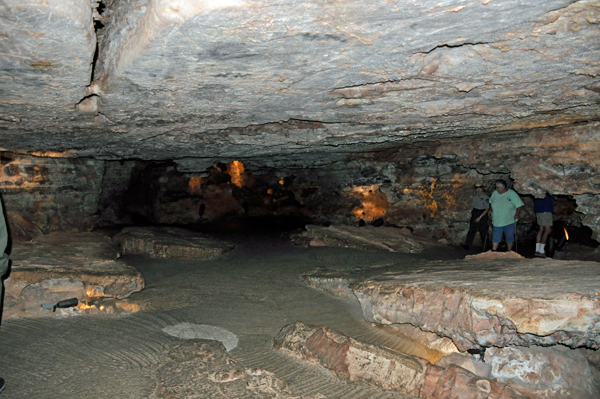
|
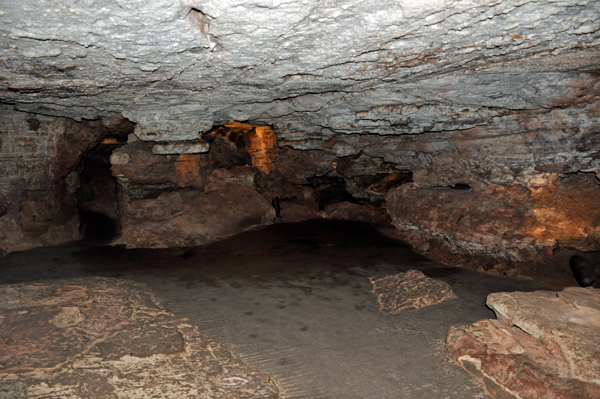
|
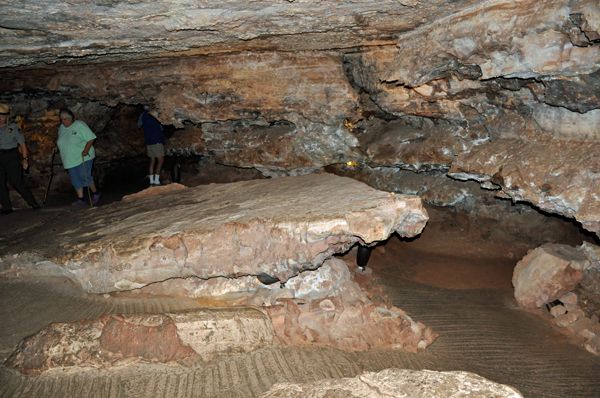
|
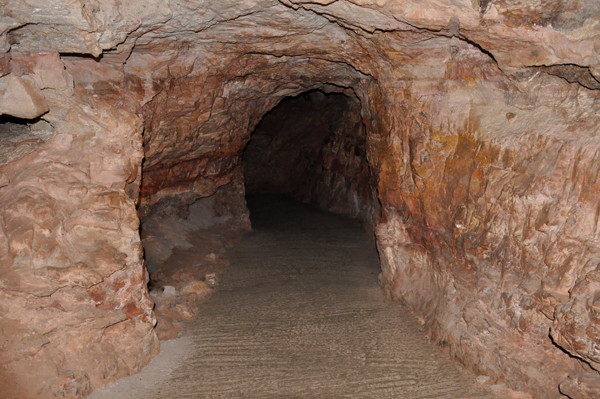
|
A baby was crying at this
time, so the ranger put his flashlight inside of his hat and kept turning
the flashlight on and off. As the light filtered through the hat, it
fascinated the baby who then stayed quietly staring at the hat while
the ranger continued his speech. Brilliant! |
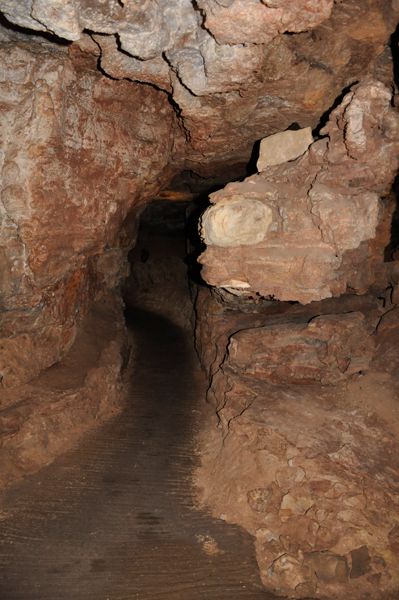
|
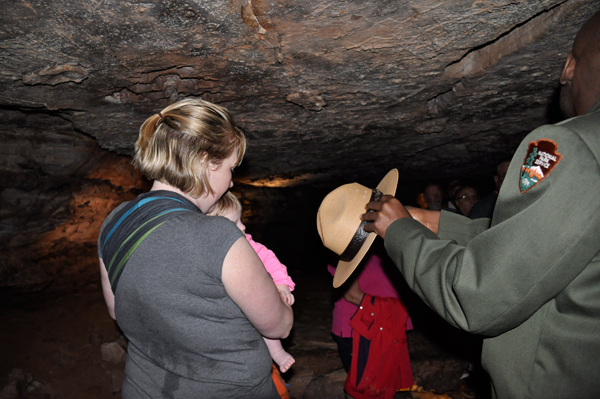
|
Below: The ranger brought
the two RV Gypsies and the rest of the tour out of the cave by elevator
at the conclusion of this tour. The elevator could only accommodate
10 people at a time, so some people had to wait their turn to go up.
Restrooms were at the surface, immediately outside the elevators. Then
of course everyone had to enter the gift shop. |
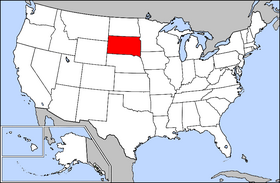
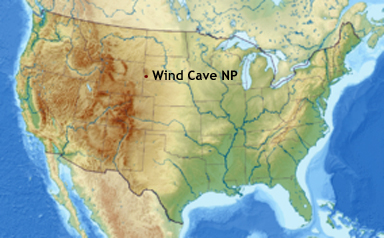
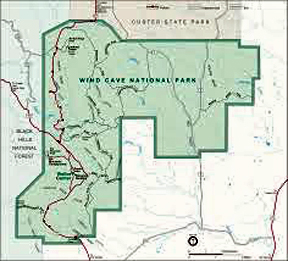













































 Continue navigation in the order of occurrence --
Continue navigation in the order of occurrence -- 
























